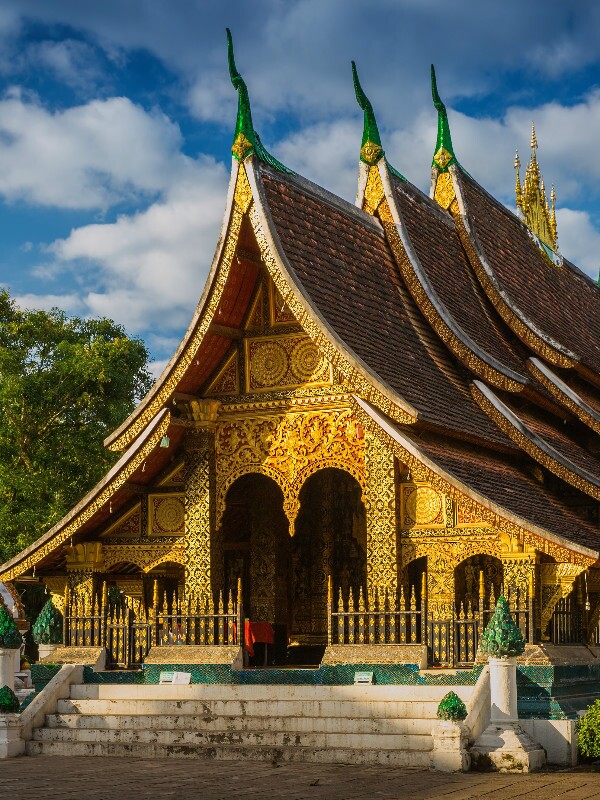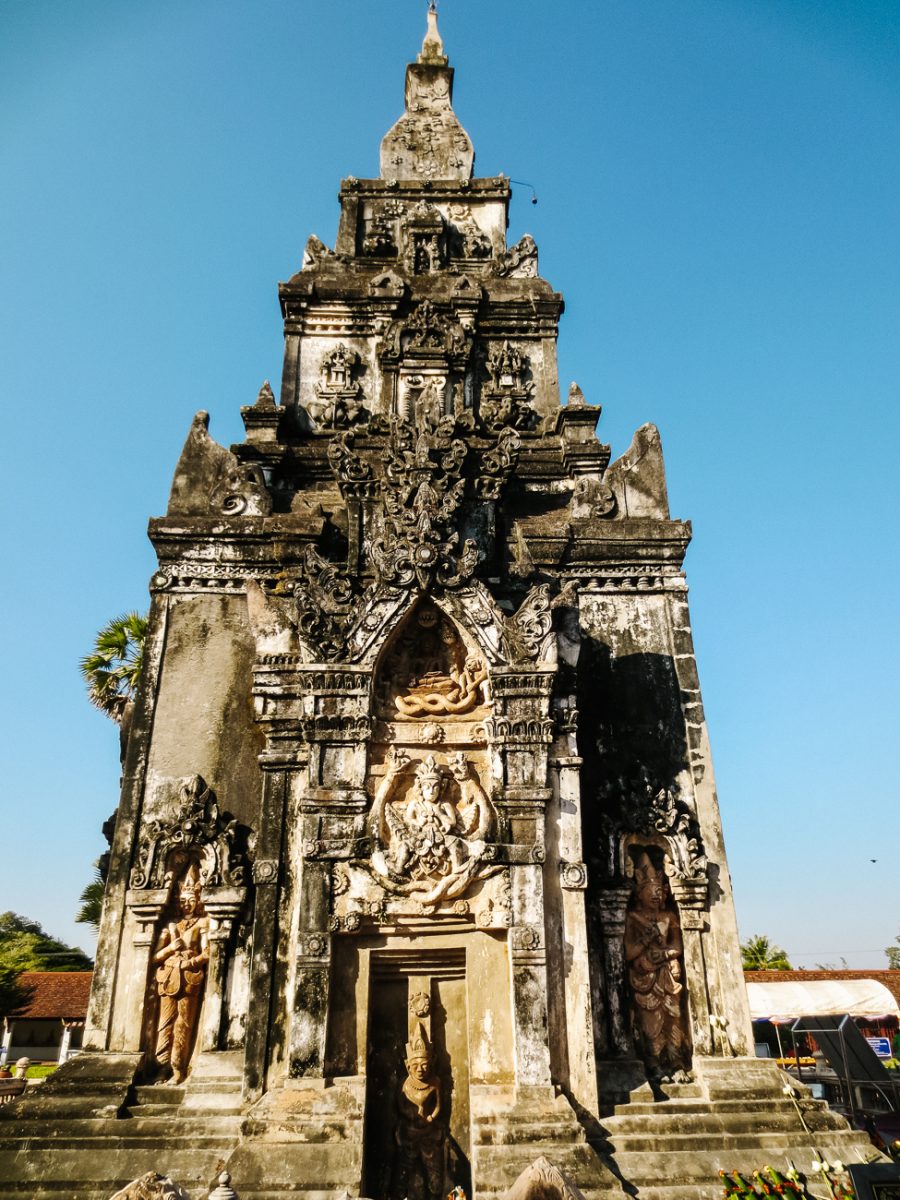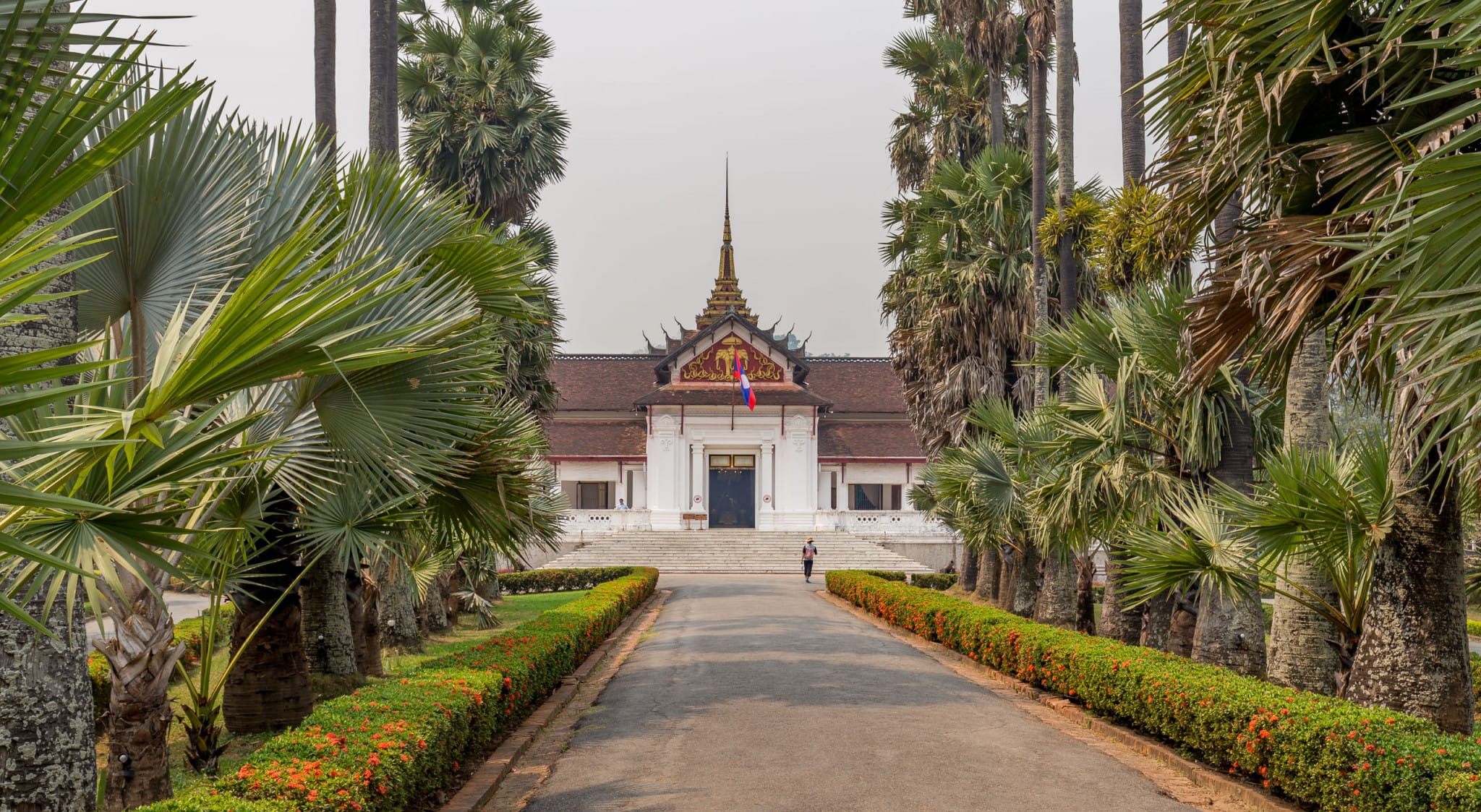European Traveler in Laos: Must-See Temples & Ruins
Introduction
Overview of Laos and its significance for European travellers
After exploring the enchanting temples and rich cultural heritage of Laos, European travellers find themselves immersed in a land of unparalleled beauty and spiritual serenity.
Laos, a hidden gem in Southeast Asia, boasts a unique blend of French colonial influence and traditional Laotian charm, making it a captivating destination for those seeking an off-the-beaten-path experience. Let's delve into the allure of Laos and why it captivates the hearts of European travellers.
The Allure of Laos
- Breathtaking Landscapes: From misty mountains to lush jungles and serene rivers, Laos offers a picturesque backdrop for exploration.
- Cultural Riches: With a history shaped by Theravada Buddhism and diverse ethnic groups, Laos entices visitors with its spiritual landmarks and vibrant traditions.
- French Colonial Elegance: The remnants of French colonial architecture add a touch of elegance to cities like Luang Prabang, blending seamlessly with the local aesthetics.
Significance for European Travelers
European travellers are drawn to Laos for a myriad of reasons:
- Authentic Cultural Immersion: Laos provides a genuine cultural experience away from the crowds, allowing visitors to connect with local traditions and rituals.
- Historical Marvels: The temples and ruins scattered across Laos showcase the country's rich history and architectural mastery, appealing to European history enthusiasts.
- Tranquil Retreat: Amidst the bustling cities, Laos offers a tranquil escape where travellers can rejuvenate their souls amidst natural beauty and peaceful surroundings.
As we journey through the temples and landmarks of Laos, the allure of this mystical land becomes even more apparent. Get ready to explore the architectural wonders and spiritual sanctuaries that await in the heart of Southeast Asia.

Wat Xieng Thong
As we continue our journey through Laos, one of the most revered temples that captivate European travellers is Wat Xieng Thong. This ancient Buddhist temple, located in the historic city of Luang Prabang, stands as a testament to Laotian craftsmanship and spiritual devotion.
History and Architecture
- Legacy of the Royals: Wat Xieng Thong was built in the 16th century by King Setthathirath, showcasing intricate artwork and exquisite design elements that reflect the royal patronage of the era.
- Laotian Craftsmanship: The temple's architecture features ornate gables, mosaic patterns, and sweeping roofs, representing traditional Laotian artistry at its best.
- Spiritual Significance: Wat Xieng Thong served as the coronation site for Lao kings and is a sacred place where ceremonies and rituals are still practised today.
Must-See Highlights
- Golden Stupa of the Great King: Admire the stunning golden stupa that houses the ashes of King Sisavang Vong, showcasing intricate details and symbolic motifs.
- Tree of Life Mosaic: Marvel at the mesmerizing Tree of Life mosaic on the exterior wall, depicting scenes from Buddhist mythology with exquisite precision.
- Chapel of the Funeral Chariot: Explore the Chapel of the Funeral Chariot, where the ornate funeral carriage of King Sisavang Vong is displayed, showcasing fine craftsmanship and regal splendour.
Immerse yourself in the rich history and architectural grandeur of Wat Xieng Thong, where every corner reveals a story of spiritual devotion and cultural legacy. As we unravel the hidden gems of this sacred temple, the essence of Laos's profound heritage comes to life in a mesmerizing tapestry of art and spirituality.

Wat Phu
From the tranquil grounds of Wat Xieng Thong, our journey leads us to the mystical ancient ruins of Wat Phu in Champasak, Laos. This UNESCO World Heritage Site holds a special connection to the grandeur of Angkor Wat in Cambodia, showcasing the intricate beauty of Khmer architecture and artistic mastery.
Ancient Ruins and Connection to Angkor Wat
- Sacred Complex: Wat Phu, meaning "mountain temple," dates back to the 5th century and was once a centre of worship dedicated to the Hindu deity Shiva, mirroring the spiritual significance of Angkor Wat.
- Khmer Influence: The layout and design of Wat Phu bear striking similarities to Angkor Wat, highlighting the cultural ties and architectural techniques shared between the Khmer Empire and Laos.
- Pilgrimage Site: Both locals and tourists flock to Wat Phu to pay homage to its ancient ruins and experience the spiritual ambience that echoes the grandeur of Angkor Wat.
Exploring the Khmer Architecture and Carvings
- Naga-lined Pathways: Walk along the naga-lined pathways leading to the temple complex, adorned with intricate carvings of mythical serpents symbolizing protection and prosperity.
- Breathtaking Views: Climb the steps to the elevated sanctuary to witness panoramic views of the Mekong River and lush landscapes, providing a serene backdrop for contemplation and reflection.
- Detailed Bas-Reliefs: Admire detailed bas-reliefs depicting Hindu deities, celestial beings, and epic tales from Hindu mythology, showcasing the artistic finesse of Khmer craftsmen.
Embark on a journey through time at Wat Phu, where the echoes of ancient civilizations and the splendour of Khmer architecture transport you to a realm of divine beauty and spiritual reverence. As we unravel the hidden wonders of this sacred site, the interconnected histories of Laos and Cambodia come alive in a tapestry of cultural brilliance and architectural marvels.

Haw Phra Kaew
Continuing our exploration of Laos's architectural wonders, we step into the majestic Haw Phra Kaew, a temple with a storied past as the former royal temple of the Laotian monarchy. Located in Vientiane, the capital city of Laos, this sacred site exudes a sense of regal splendor and cultural significance.
The Former Royal Temple
- Regal History: Haw Phra Kaew was originally built in the 16th century to house the Emerald Buddha, a revered symbol of the Laotian royal family until it was later moved to Thailand.
- Architectural Grandeur: The temple's architecture reflects a blend of Laotian and Thai styles, featuring intricate carvings, gilded motifs, and ornate details that showcase the opulence of the monarchy.
- Symbol of Power: As a place of royal worship and spiritual reverence, Haw Phra Kaew stood as a testament to the authority and prestige of the Laotian monarchs.
Treasures Housed Within
- Buddhist Artifacts: Explore the temple's halls to discover a collection of exquisite Buddhist sculptures, sacred relics, and ceremonial objects that provide insight into Laos's religious traditions.
- Fine Craftsmanship: Admire the delicate carvings, vibrant murals, and intricate decorations that adorn the interior of Haw Phra Kaew, showcasing the skill and artistry of local craftsmen.
- Cultural Legacy: The treasures within Haw Phra Kaew serve as a reminder of Laos's rich heritage and spiritual heritage, preserving the legacy of the royal dynasty for generations to come.
Step into the hallowed halls of Haw Phra Kaew and immerse yourself in the opulent world of the Laotian monarchy, where history, art, and spirituality converge to create a tapestry of regal elegance and cultural significance. As we uncover the treasures housed within this royal temple, the legacy of Laos's past monarchs unfolds in a dazzling display of artistic brilliance and historical splendour.

That Ing Hang Stupa
Leaving behind the grandeur of Haw Phra Kaew, we venture into the spiritual realm of Laos to discover the revered That Ing Hang Stupa. Nestled in the heart of Savannakhet, this sacred stupa serves as a beacon of faith and cultural reverence, drawing pilgrims and tourists alike to witness its tranquil beauty.
Sacred Stupa Attracting Pilgrims
- Pilgrimage Site: That Ing Hang Stupa is a revered pilgrimage site where devotees come to pay their respects, offer prayers, and seek blessings for prosperity and well-being.
- Architectural Splendor: The stupa's elegant design and serene surroundings create a peaceful ambience that invites visitors to reflect and find solace in the tranquillity of the sacred space.
- Spiritual Aura: The stupa's sacred energy and historical significance make it a magnet for pilgrims seeking spiritual guidance and enlightenment on their journey.
Cultural Significance
- Historical Heritage: That Ing Hang Stupa holds deep cultural roots and historical significance, embodying the traditions and beliefs of the Laotian people passed down through generations.
- Symbol of Unity: The stupa symbolizes unity and community spirit, serving as a focal point for religious ceremonies, cultural celebrations, and communal gatherings that strengthen the social fabric of Laos.
- Artistic Expression: Admire the intricate craftsmanship and symbolic motifs adorning the stupa, reflecting the artistic prowess and cultural symbolism embedded in Laotian architectural traditions.
Step into the sacred aura of That Ing Hang Stupa, where the whispers of prayers and the echoes of ancient traditions converge to create a sanctuary of faith and cultural heritage. As we delve into the cultural significance of this revered site, the essence of Laos's spiritual legacy unfolds in a harmonious blend of reverence, artistry, and communal devotion.

Vat Phou
As we journey further into the cultural tapestry of Laos, we encounter the timeless allure of Vat Phou in Champasak. This ancient temple complex, recognized as a UNESCO World Heritage Site, stands as a testament to Laos's rich heritage and spiritual legacy, weaving together history, art, and reverence in a harmonious ensemble.
UNESCO World Heritage Site in Champasak
- Historic Splendor: Vat Phou, meaning "Mountain Temple," is a sacred site dating back to the 5th century, dedicated to the Hindu deity Shiva and showcasing the architectural grandeur of the Khmer Empire.
- Archaeological Marvel: The temple complex comprises intricate stone structures, terraces, and shrines set against a backdrop of lush greenery and the majestic Phou Kao mountain, creating a breathtaking panorama of ancient craftsmanship.
- Preservation Efforts: Recognized by UNESCO for its cultural significance, Vat Phou stands as a testament to Laos's commitment to preserving its historical treasures and sharing them with the world.
Importance in Laotian History and Culture
- Cultural Legacy: Vat Phou serves as a living testament to Laos's intertwined history with the Khmer Empire, reflecting the cultural exchange and artistic influences that shaped the region's architectural landscape.
- Spiritual Sanctuary: The temple's sacred ambiance and spiritual resonance make it a pilgrimage site for Buddhists and history enthusiasts alike, offering a glimpse into the religious practices and beliefs that have shaped Laotian culture.
- National Symbol: Vat Phou stands as a symbol of national pride and cultural identity, embodying the resilience and heritage of the Laotian people through centuries of tumultuous history.
Embark on a journey through the hallowed halls of Vat Phou, where the echoes of ancient rituals and the whispers of bygone eras intertwine to create a tapestry of historical richness and cultural significance.
Amidst the tranquil beauty of Champasak, this UNESCO World Heritage Site beckons travellers to immerse themselves in the mystical aura of Laos's ancient past and uncover the profound connections between history, spirituality, and artistry.

Wat Si Saket
Our exploration of Laos's architectural gems brings us to the venerable Wat Si Saket, the oldest temple in Vientiane that stands as a testament to the city's spiritual heritage and artistic legacy. This sacred site, with its ancient charm and revered traditions, offers a glimpse into the rich tapestry of Laos's religious and cultural heritage.
Oldest Temple in Vientiane
- Historical Legacy: Wat Si Saket was constructed in 1818 by Chao Anou, the last king of Vientiane, and remains an enduring symbol of the city's religious devotion and architectural finesse.
- Survivor of Time: Despite facing conflicts and invasions over the centuries, Wat Si Saket has stood the test of time, preserving its heritage as a sanctuary for Buddhist teachings and practices in Vientiane.
- Architectural Elegance: The temple's blend of Laotian and Siamese styles, characterized by its cloisters, carved wooden doors, and ornate roof structures, showcases a unique fusion of artistic traditions.
Noteworthy Features
- Cloistered Galleries: Admire the cloistered galleries surrounding the temple courtyard, housing thousands of Buddha statues in various poses and expressions, creating a serene atmosphere for contemplation.
- Mural Masterpieces: Explore the walls of Wat Si Saket adorned with intricate murals depicting Buddhist stories, historical events, and scenes from daily life, offering a glimpse into the cultural richness of Laos.
- Library of Wisdom: Visit the temple's library, housing ancient scriptures and manuscripts that provide insight into the teachings and philosophy of Buddhism, enriching visitors with spiritual wisdom and historical knowledge.
Step into the sacred precincts of Wat Si Saket, where the whispers of ancient prayers and the echoes of bygone eras converge to create a sanctuary of spiritual solace and cultural splendour. As we unravel the noteworthy features of this venerable temple, the essence of Vientiane's spiritual heritage and artistic magnificence unfolds in a tapestry of sacred artistry and historical significance.

Conclusion
Summarizing the Must-See Temples and Ruins for European Travelers in Laos
As we conclude our immersive journey through the spiritual and architectural wonders of Laos, European travellers are beckoned to explore a realm rich in history, cultural richness, and artistic grandeur.
From the tranquil temples of Luang Prabang to the ancient ruins of Champasak, Laos unveils a tapestry of awe-inspiring sites that capture the hearts and imaginations of those seeking a deeper connection to Southeast Asia's spiritual legacy.
Must-See Temples and Ruins
- Wat Xieng Thong: Delve into the history and intricate artwork of this historic temple in Luang Prabang, where royal patronage and spiritual significance converge in a splendid display of Laotian craftsmanship.
- Wat Phu: Explore the ancient ruins of Wat Phu in Champasak, with its Khmer architectural marvels and connections to the grandeur of Angkor Wat, offering a glimpse into Laos's vibrant past.
- Haw Phra Kaew: Step into the former royal temple of Laos's monarchy in Vientiane, where treasures and regal splendour narrate a tale of cultural heritage and architectural opulence.
- That Ing Hang Stupa: Witness the sacred serenity of That Ing Hang Stupa, a pilgrimage site exuding cultural significance and spiritual resonance that captivates pilgrims and tourists alike.
- Vat Phou: Journey to the UNESCO World Heritage Site in Champasak to uncover the importance of Vat Phou in Laotian history and culture, where ancient traditions and architectural wonders converge in a mesmerizing panorama.
- Wat Si Saket: Visit the oldest temple in Vientiane, Wat Si Saket, to admire its architectural elegance and cultural treasures, showcasing a blend of history, art, and spiritual wisdom.
As European travellers venture through Laos's sacred sites and historical landmarks, they embark on a transformative odyssey where the past meets the present, and the spirit of the nation shines through in a harmonious symphony of cultural richness and architectural splendour.
Join us on this journey of discovery and reverence, where the hidden gems of Laos await to enchant and inspire travellers seeking a deeper connection to the soul of this mystical land.
